Peeping Caddis (Fur Case)
By Carl Richards and Bob Braendle
Eruciform Larvae
(Case-Making Larvae)
Studies have found that at certain seasons trout
consume a huge number of case-making larvae, case
and all. These larvae make up a high percentage
of the trout's diet in the fall, winter and spring.
This is because there is not much else to eat and
the stream bottoms are devoid of aquatic vegetation
which makes the larvae crawling on the substrate
vulnerable. In spring and summer there are plenty
of soft-bodied insects to eat and the fish probably
prefer these to the hard-cased larvae.
These larvae make their cases from sand grains,
peppbles and various peices of plant life. Study
the pictures of the different cases in the last part
of this book and you will be able to imitate the
cases of caddisflies that make cases with the two
techniques we feature [only one shown here]. Keep
in mind some of the caddis larvae are small but
numerous like the Grannom, and some are less
numerous but very large. The very large ones
are fine searching patterns and will take
large trout.
Materials, Peeping Caddis (Fur Case):
Grannom (Brachycenrus)
Hook: Tiemco TMC 5212, 2XL, size 14.
Case: Spun fur from a hare's mask, guard hairs included
(other fur such as muskrat, possom, beaver; etc. can be used
depending on the color of the case other species' have.)
Legs: Partridge hackle.
Head: Antroe yarn in yellow or olive.
Weight: Lead wire [where legal].
Thread: Brown.
Method, Peeping Caddis (Fur Case):
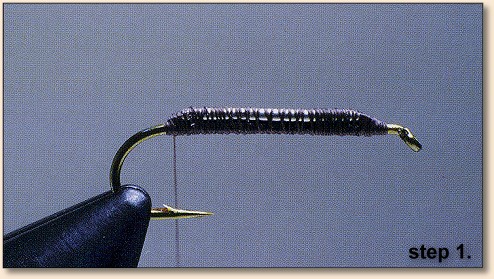
1. Weight the hook by wrapping lead wire on the hook so
it is on the top of the hook.
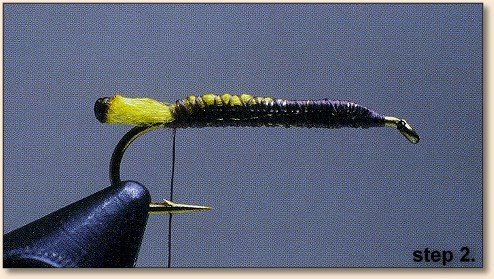
2. Take a one-inch piece of Antron yarn and hold the end over
a cigarette lighter. The fibers will fuse and turn brown.
Tie-in the yarn on top of the hook at the bend so the dark
head protrudes over the bend.
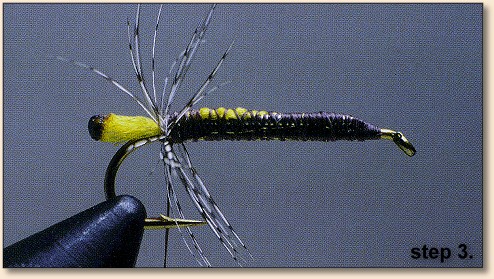
3. Tie-in a small partridge feather just after the yarn
head and wrap two turns of hackle.
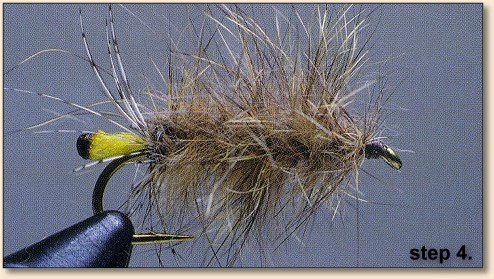
4. Use a Dubbing Loop to dub the case. It should be thick
and contain the guard hairs and taper smaller back to the
eyes of the hook. Brush the hair out with a stiff
toothbrush.
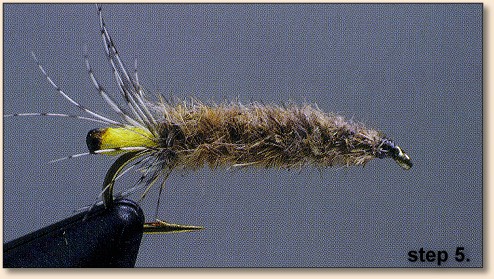
5. Clip the body to an even square taper. Some caddisflies
in this family have round cases so either shape will be
accurate. Check the cases in your river to see which is
the most common. Some families have rougher cases such as
Limnephilidae. These can be left unclipped. Fur from
different animals can be used for different colors. ~ Carl Richards and Bob Braendle
Publisher's Note: For more information on the Grannom
Caddis, check out this article in
Not Quite Entomology.
Credit: This fly is one of many in the book
Caddis Super Hatches by Carl Richards
and Bob Braendle. Published by Frank Amato Publications,
in 1997. $24.95 US.
|



